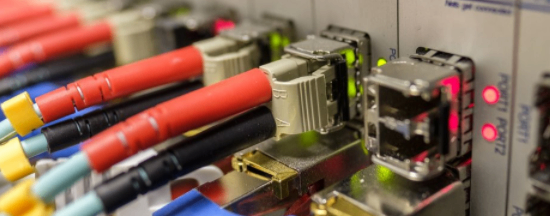Oufu Optical Fiber Cable Co.,Ltd
Address: Shenyang, Liaoning, China
Contact person: Manager Zhang
Phone: 400-964-1314
Mobile phone: +86 13904053308
【whatsapp && wechat】
2024-10-10 3930

Understand Your Network Requirementswww.adsscable.cn
Before diving into the world of optical transceivers, it's crucial to have a clear understanding of your network's requirements. Consider the following factors:
Data Rate and Bandwidth: Determine the data rate and bandwidth your network needs to support. Different optical transceivers offer varying data rates, ranging from 1Gbps to 100Gbps and beyond.
Distance: Assess the distance over which data needs to be transmitted. Optical transceivers are designed for different transmission ranges, from short-reach applications within a data center to long-haul transmissions spanning thousands of kilometers.
Protocol Compatibility: Ensure that the optical transceiver you choose is compatible with the protocols your network uses, such as Ethernet, SONET/SDH, or Fibre Channel.
Form Factor: Consider the physical size and mounting options of the transceiver. Common form factors include SFP (Small Form-factor Pluggable), SFP+, QSFP+, and CXP, each suited for different applications and environments.www.adsscable.cn
Evaluate Technical Specifications
Once you have a grasp of your network's requirements, it's time to evaluate the technical specifications of the optical transceiver options:
Wavelength: Optical transceivers operate at specific wavelengths, typically in the 850nm, 1310nm, or 1550nm ranges. Choose a wavelength that aligns with your fiber-optic infrastructure.
Optical Power and Sensitivity: These specifications determine the transceiver's ability to transmit and receive signals effectively. Higher optical power and lower sensitivity thresholds are generally better for longer distances and noisy environments.
Power Consumption: Consider the power consumption of the transceiver, especially if you are deploying it in energy-sensitive environments like data centers.
Operating Temperature: Ensure that the transceiver can operate within the temperature range of your deployment environment.www.adsscable.cn
Consider Vendor Reliability and Support
Choosing a reputable vendor is equally important as selecting the right technical specifications. Consider the following factors:
Brand Reputation: Research the vendor's reputation in the industry. Look for vendors with a proven track record of delivering high-quality, reliable products.
Warranty and Support: Check the warranty period and the level of technical support offered by the vendor. A comprehensive warranty and responsive technical support can save you time and money in the long run.
Compliance and Certifications: Ensure that the optical transceiver complies with relevant industry standards and certifications, such as MSA (Multi-Source Agreement) compliance.
Cost Considerations
While cost is an important factor in any purchasing decision, it should not be the sole criterion. Balance cost with performance and reliability to ensure that you get the best value for your money. Consider the total cost of ownership, including maintenance, support, and potential downtime due to equipment failure.
Conclusion
Choosing the most suitable optical transceiver for your needs requires a thorough understanding of your network's requirements, careful evaluation of technical specifications, consideration of vendor reliability and support, and a balanced approach to cost considerations. By following this guide, you can make an informed purchase decision that ensures optimal network performance and reliability. Remember, the right optical transceiver can significantly enhance your network's capabilities, while the wrong choice can lead to performance bottlenecks and increased costs. So, take your time, do your research, and choose wisely.